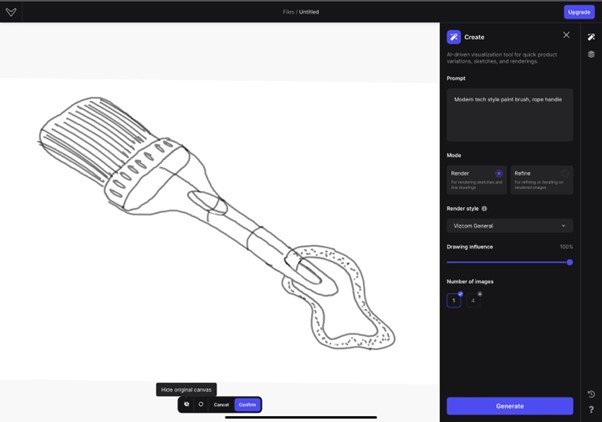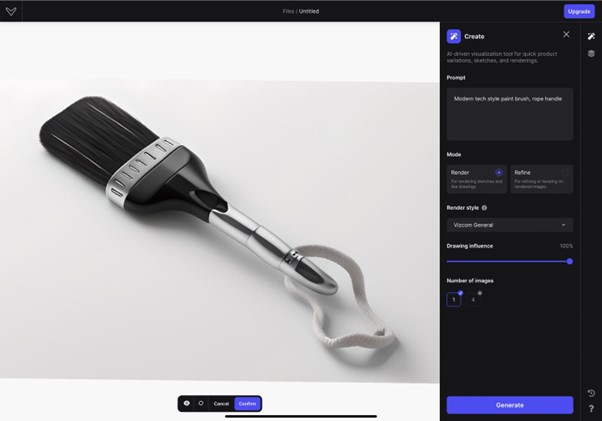AI in Concept Design of Consumer Products. The process from idea to reality is a creative, iterative and time-consuming journey. However, with the arrival of Artificial Intelligence (AI), the process of concept design for consumer products has gained newfound efficiency and creative potency.
In this article, we delve into the instrumental role AI can play in concept design, offering practical examples of its application in sketching, while also addressing the intriguing challenges that continue to unfold.
The Efficiency Overhaul
AI’s impact on concept design is like a turbocharger for creativity and efficiency. Consider the conventional process of generating multiple concept sketches for a new consumer product.
With AI, this lengthy task becomes a lot easier. AI algorithms can take design criteria, user preferences, and market trends as input to output a range of presentable concept sketches in no time. This allows designers to explore a multitude of design directions before converging to a selection of concepts that are worth to be presented, in much less time than usual.
Sketching Reinvented
AI-assisted concept sketching takes the age-old practice to a new level. Imagine you’re designing a sleek smartphone. With AI, you can input parameters like screen size, camera placement, and even ergonomics. In moments, AI-generated sketches portray various possibilities. These sketches serve as thought starters, sparking your creativity and refining your vision.


Optimizing budget allocation
While the practicality of manual hand sketches is recognized, their interpretation can pose challenges in conveying ideas to clients. Designers often invest substantial effort in rendering sketches presentable, adding color, shading, and texture to convey a sense of realism. This facet, although pivotal for client comprehension, takes time and budget resources away from the creative core. This is where AI comes in to play. By assimilating your sketch and harmonizing it with your inputs on color, texture, and materials, AI produces intricate detailing within seconds. This resource optimization allows designers to allocate more budget to the idea-generation phase, thereby enhancing value for clients.
The Quirks and Challenges
However, AI’s creative power isn’t without its quirks. Despite generating impressive sketches, AI isn’t infallible. A sketch might reveal a sleek smartphone, but a closer look might show a button slightly off-center or a speaker grille misaligned. These small errors highlight the gap between machine precision and human discernment.
A drill placed slightly off-center might escape AI’s magical algorithms but won’t evade your trained engineer’s eye. This is where the symbiotic relationship between human expertise and AI’s computational ability shines. AI accelerates your work, offering diverse concepts, while you ensure every detail aligns flawlessly.
A glimpse into the future
The future of concept design, with AI at its core, shines with potential. The collaboration between engineers and AI-driven tools announces an era where efficiency and creativity intertwine seamlessly. With every iteration, AI comes closer to replicating the detailed eye of a skilled designer.
Conclusion
In the end, as designers and engineers, our expertise remains indispensable. AI doesn’t diminish our role; it empowers us to channel our energy into refining designs, iterating concepts, and tackling challenges that demand human insight (eg. style, ergonomics, construction solutions etc). The world of concept design, aided by AI, is one where the fusion of technology and creativity thrives, leading to groundbreaking consumer products.
Written by Boukje Koch, Co-Founder and Director of A4M group.

